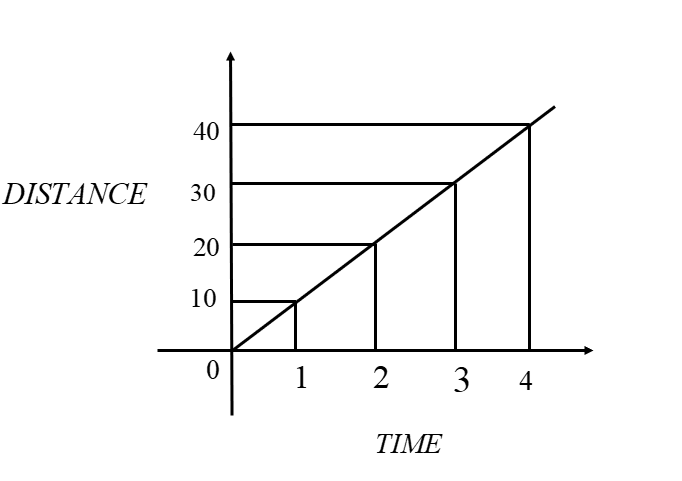
Uniform linear motion is as/an ______ motion while uniform circular motion is a/an ______ motion
A. Accelerated, non-accelerated
B. Non-accelerated, accelerated
C. Deviated, retarded
D. Uniform, retarded
Answer
482.4k+ views
Hint: Uniform linear motion is the motion of the object in which the object travels in a straight line. Since it is a straight line motion the velocity is constant. In Uniform circular motion the object travels at a constant speed around the fixed object.
Complete step by step answer:
In physics, the motion in which the velocity of the body is traveling in a straight line remains the same is called Uniform linear motion. The distance traveled by the moving object will be the same at every time interval, regardless of the length, time and motion, etc.
The basic form of the mechanical uniform motion is the uniform linear motion. The name itself says that the movement of the object in a physical point travels in a straight line. It is not an accelerated motion.

The graph given is between the time and distance which is the example of the uniform linear motion.
Uniform circular motion is the motion that has the constant speed and velocity that travels around the center point or axis. The motion of the object is said to be consistent. The object travels in the curved path and the object maintains a constant radial distance from any point at the given time and the object moves tangent to the curved path. This type of motion is an accelerated motion.
From the given explanation it is clear that the uniform linear motion has a fixed direction along with the constant speed and it is not accelerated. In a uniform circular motion, the object’s motion changes continuously. It also has a constant speed but it is accelerated motion.
So, the correct answer is “Option B”.
Note:
The non-uniform motion is the motion in which the object travels will not cover the same distances at the same interval of time. Whenever the object’s speed changes at a different proportion of the time the motion is observed to be the non-uniform motion.
Complete step by step answer:
In physics, the motion in which the velocity of the body is traveling in a straight line remains the same is called Uniform linear motion. The distance traveled by the moving object will be the same at every time interval, regardless of the length, time and motion, etc.
The basic form of the mechanical uniform motion is the uniform linear motion. The name itself says that the movement of the object in a physical point travels in a straight line. It is not an accelerated motion.

The graph given is between the time and distance which is the example of the uniform linear motion.
Uniform circular motion is the motion that has the constant speed and velocity that travels around the center point or axis. The motion of the object is said to be consistent. The object travels in the curved path and the object maintains a constant radial distance from any point at the given time and the object moves tangent to the curved path. This type of motion is an accelerated motion.
From the given explanation it is clear that the uniform linear motion has a fixed direction along with the constant speed and it is not accelerated. In a uniform circular motion, the object’s motion changes continuously. It also has a constant speed but it is accelerated motion.
So, the correct answer is “Option B”.
Note:
The non-uniform motion is the motion in which the object travels will not cover the same distances at the same interval of time. Whenever the object’s speed changes at a different proportion of the time the motion is observed to be the non-uniform motion.
Recently Updated Pages
Why are manures considered better than fertilizers class 11 biology CBSE

Find the coordinates of the midpoint of the line segment class 11 maths CBSE

Distinguish between static friction limiting friction class 11 physics CBSE

The Chairman of the constituent Assembly was A Jawaharlal class 11 social science CBSE

The first National Commission on Labour NCL submitted class 11 social science CBSE

Number of all subshell of n + l 7 is A 4 B 5 C 6 D class 11 chemistry CBSE

Trending doubts
What is meant by exothermic and endothermic reactions class 11 chemistry CBSE

10 examples of friction in our daily life

One Metric ton is equal to kg A 10000 B 1000 C 100 class 11 physics CBSE

1 Quintal is equal to a 110 kg b 10 kg c 100kg d 1000 class 11 physics CBSE

Difference Between Prokaryotic Cells and Eukaryotic Cells

What are Quantum numbers Explain the quantum number class 11 chemistry CBSE




